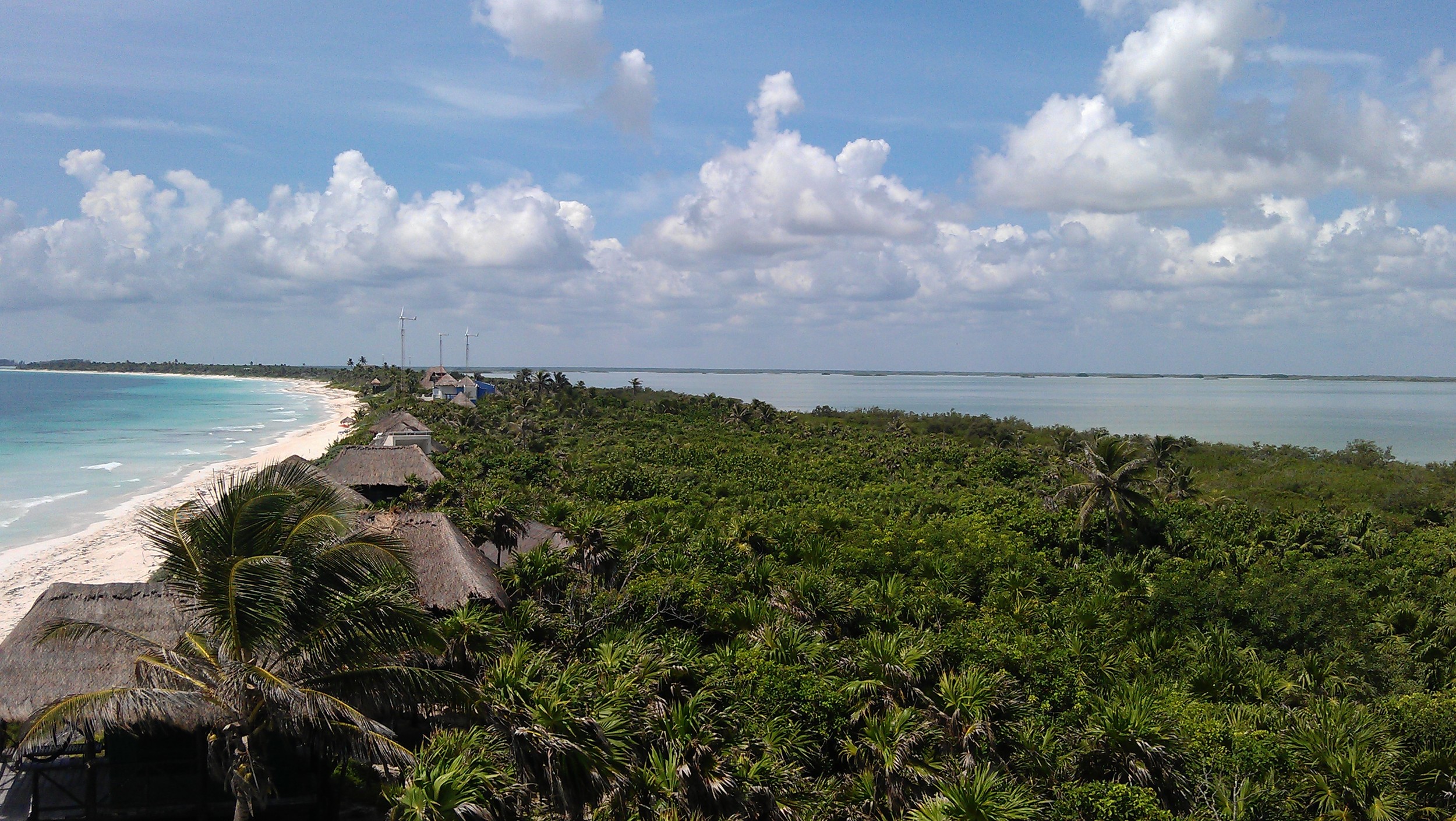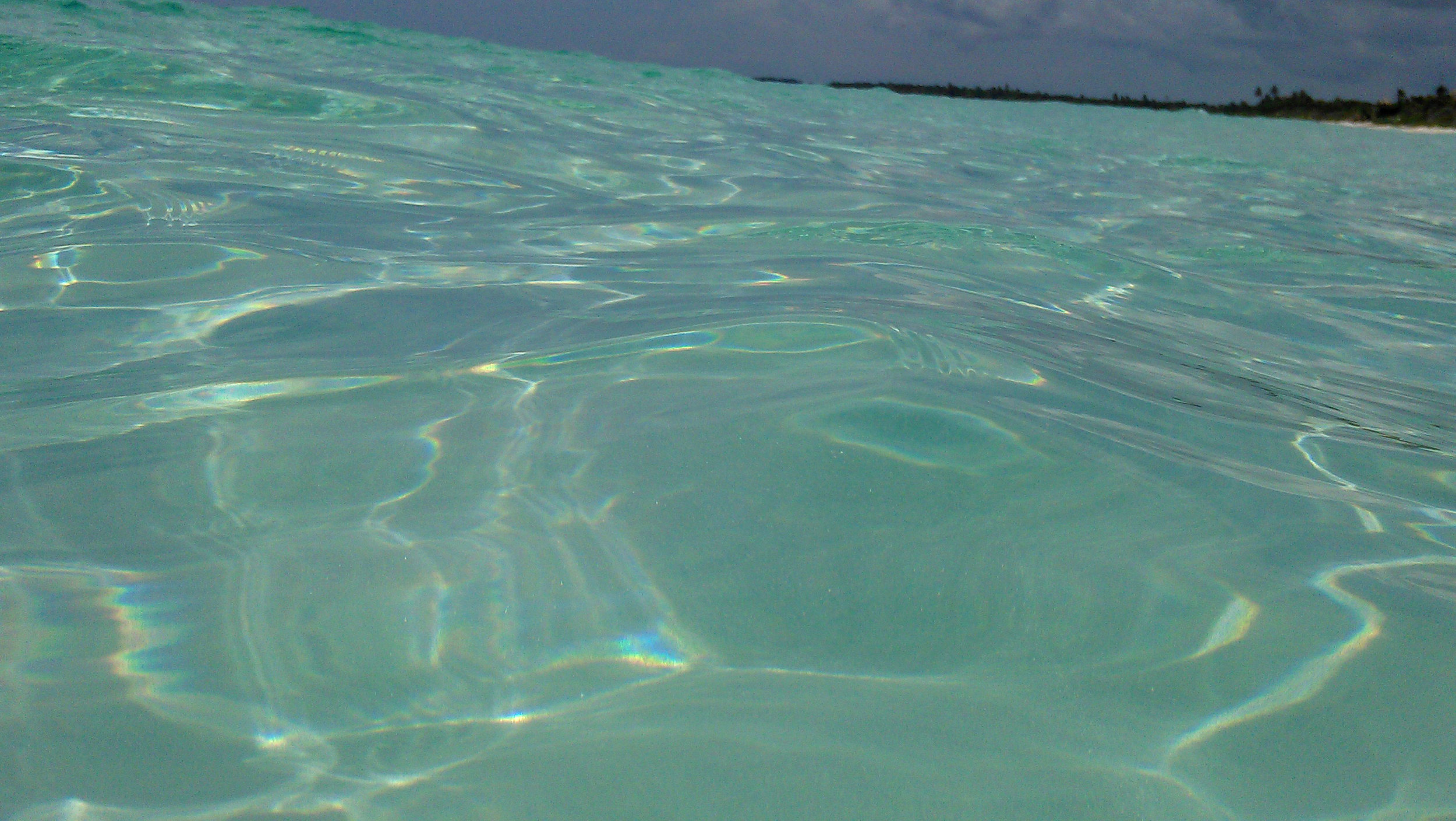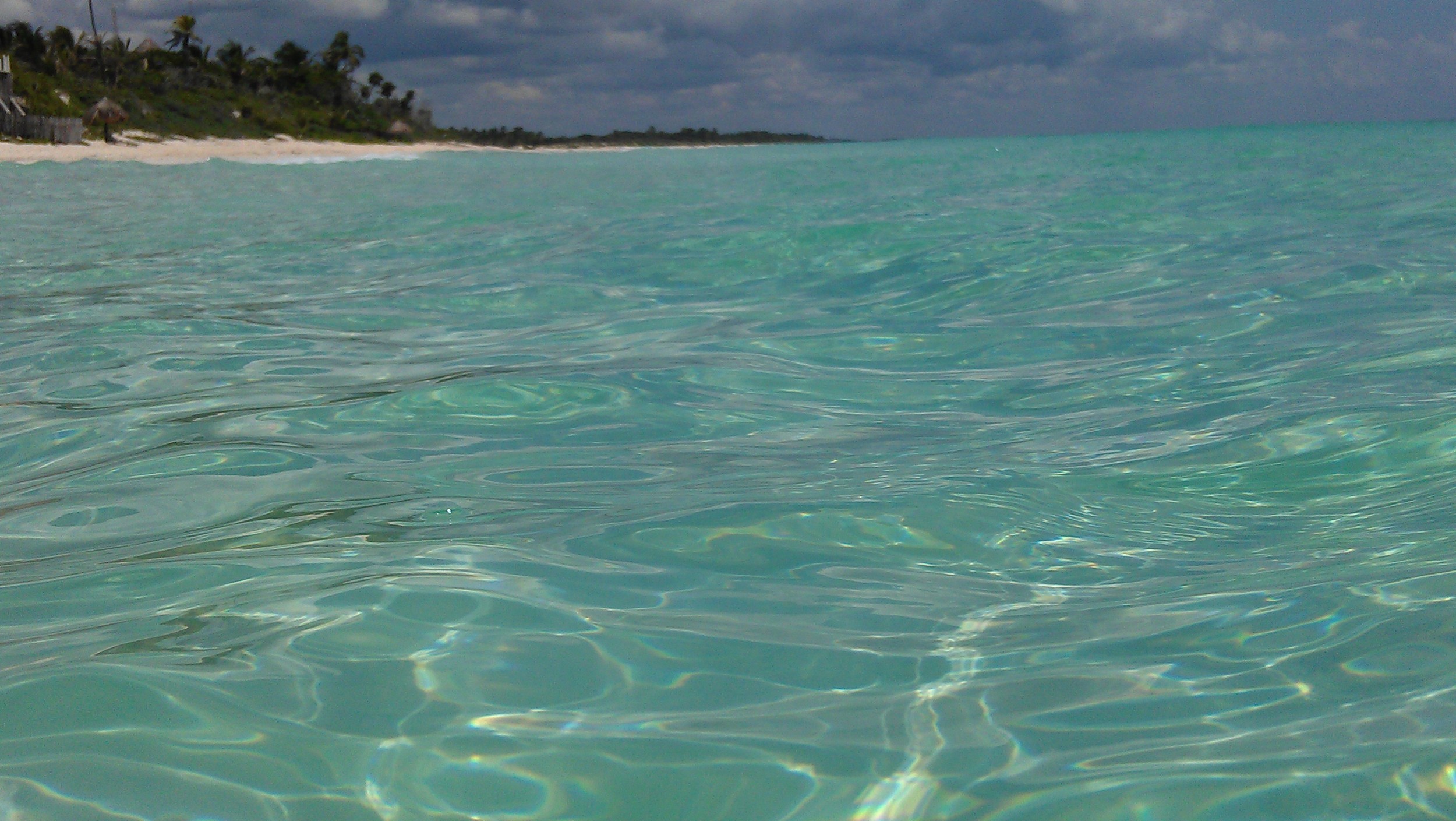 The name is fitting. In Mayan, Sian ka'an means “origin of the sky,” and in this place, where there is a unique interplay of sky, water, and jungle, no other label would do. I could describe it as breathtaking or I could call it spectacular, but there are no words to adequately describe a place like Sian ka'an. It must be experienced. Located along the Caribbean side of the Yucatan Peninsula, in Mexico, Sian ka'an is a biosphere reserve that, in 1987, was declared a World Heritage Site by the United Nations Educational, Scientific and Cultural Organization (UNESCO). A World Heritage site is a place that is significant to all of humanity and is protected for all generations. Other examples of World Heritage Sites are the Serengeti National Park, in Tanzania and the Colosseum, in Rome, Italy. Interestingly, cultural phenomenon, like Argentine Tango, is also on UNESCO’s list of World Heritage Sites. UNESCO states that for a place to warrant designation as a World Heritage Site, it must "contain superlative natural phenomena or areas of exceptional natural beauty and aesthetic importance." Sian ka'an, at least the part I saw, is the epitome.
The name is fitting. In Mayan, Sian ka'an means “origin of the sky,” and in this place, where there is a unique interplay of sky, water, and jungle, no other label would do. I could describe it as breathtaking or I could call it spectacular, but there are no words to adequately describe a place like Sian ka'an. It must be experienced. Located along the Caribbean side of the Yucatan Peninsula, in Mexico, Sian ka'an is a biosphere reserve that, in 1987, was declared a World Heritage Site by the United Nations Educational, Scientific and Cultural Organization (UNESCO). A World Heritage site is a place that is significant to all of humanity and is protected for all generations. Other examples of World Heritage Sites are the Serengeti National Park, in Tanzania and the Colosseum, in Rome, Italy. Interestingly, cultural phenomenon, like Argentine Tango, is also on UNESCO’s list of World Heritage Sites. UNESCO states that for a place to warrant designation as a World Heritage Site, it must "contain superlative natural phenomena or areas of exceptional natural beauty and aesthetic importance." Sian ka'an, at least the part I saw, is the epitome. The part I saw was, in reality, very little. Since I was in Tulum, conveniently located right next door to Sian ka'an, I could have seen more of the biosphere reserve, but there were issues. Issues such as: I didn’t know it was there, and even if you are aware of the place, driving a rental car into the area, as I discovered, is not the best option.
The part I saw was, in reality, very little. Since I was in Tulum, conveniently located right next door to Sian ka'an, I could have seen more of the biosphere reserve, but there were issues. Issues such as: I didn’t know it was there, and even if you are aware of the place, driving a rental car into the area, as I discovered, is not the best option.
Tourism is booming on the Mayan Riviera. If you go, then you will be directed to many attractions. Some Mexicans might even tell you that there are tours of the Sian Ka'an biosphere reserve, but ironically, Senior Frog is more robustly promoted. I think that, if you have a national treasure comparable to Egyptian pyramids, you might be tempted to give a little more than just a nod in that direction, but curiously, the Mexicans don’t. And who can blame them; why spoil a paradise with throngs of tourists? However, once I discovered the reserve, I wanted to visit. From my location, there was one access point, a road- which came with some notoriety. I don’t know if it had an official name, but I heard many locals calling it terraceria fea, or in English, the road from hell (that’s my interpretation).
The 40 km dirt road from the park entrance to the fishing village, Punta Allen, is said to take about 1 hour, but this can vary depending on weather conditions and the vehicle you are driving. If the situation is less than ideal, then it could take all day. The locals recommend visiting the reserve with a tour guide or renting a jeep. However, by the time I discovered Sian ka'an, I was running out of time and money, so I decided to drive my economy class rental car into the reserve and assess the condition of the road.
In spots, the road has rocks jutting up from the sand. I had to thread the vehicle through a maze of deep craters, and acceleration was impossible. Park rangers at the entrance to the park had told me that Mexico was repairing the road and that it would be ok to drive in, at least as far as the bridge, but I saw little evidence of improvements. I took their advice and didn’t venture beyond that landmark. I stopped just short of the bridge, at the Centro Ecologico Sian Ka’an (CESiaK) ranch, which is an outpost run by an environmental organization dedication to education and conservation. Their 15 acre ranch occupies an abandoned resort on a bluff overlooking the Caribbean ocean, and from their terrace, you can marvel at the spectacular panorama. From that vantage point you can observe a thin cape, covered with dense jungle, reaching out into the water toward Punta Allen. Like other areas in Sian Ka’an, it is the tip of a barrier reef network that runs up the Central American coast. Those points that emerge from the sea, have developed remarkable habitats. 
The place pulsates with life. Above the jungle canopy I saw a cloud of butterflies, I read that there are 318 species in the park. There are many birds, including pink flamingos and toucans. Other exotic and rare creatures abound. In the trees you’ll find spider monkeys and Jaguars, and in the water: crocodiles and sea turtles. The area is dotted with cenotes, or cavernous sinkholes, many that are fed by underground rivers that turn them into crystal clear pools. Where the jungle gives way to the Caribbean, you’ll find miles of deserted beach. Then, there are the lost civilizations. 
There are 23 archeological sites in Sian Ka’an, some are only partially excavated. They are the remnants of Mayan civilization and date back thousands of years. The Mayan engineers and architects built roads and temples all over Sian Ka’an and although the jungle has strangled them for eons, they remain. It’s still possible to see artwork on many of the structures; stone reliefs depict patterns and figures. The Maya are known to have been great muralists and their structures must have been saturated in color. It’s tempting to speculate about what Sian Ka’an must have looked like during the peak of the Mayan empire. You can imagine the colorful palaces and temples rising out of the jungle where they are beset by forces-of-nature that few places on earth can summon. It must have been striking. Indeed, it’s easy to imagine how the Mayans named the place Sian Ka’an. If you go there, then you will understand- it’s the birthplace of the sky. 
